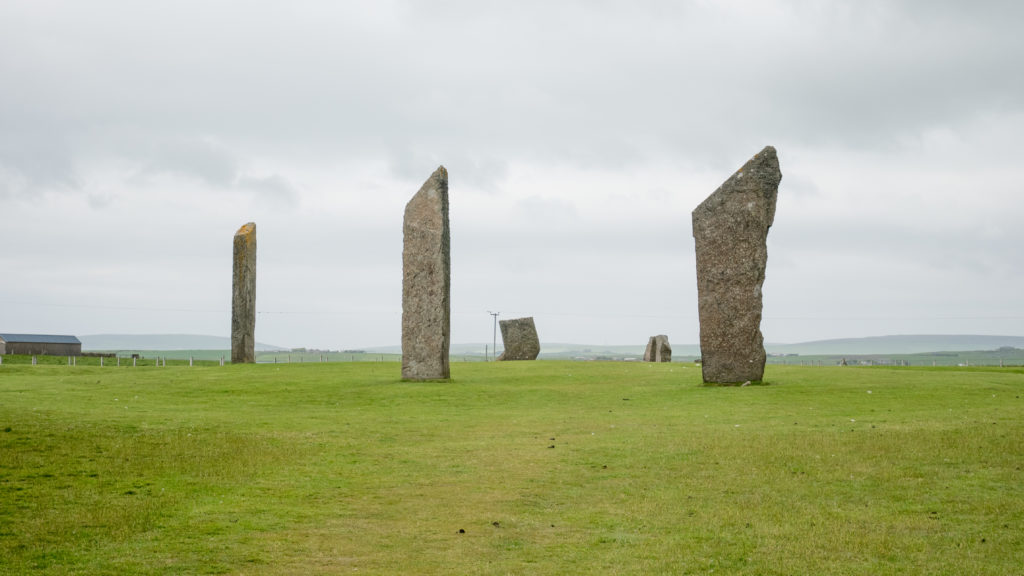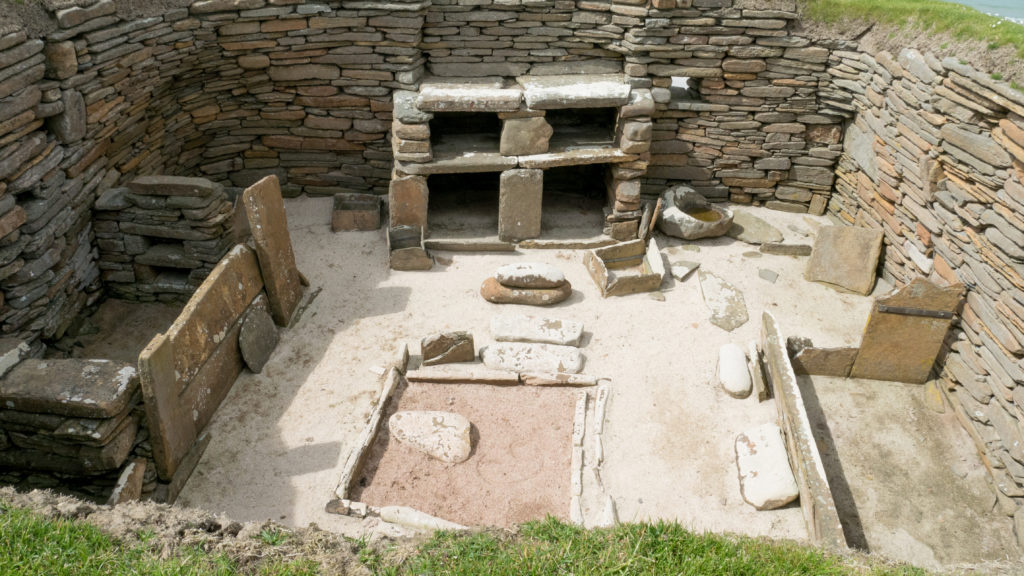The theme of the conference of the International Society for the Sociology of Religion held in Louvain-La-Neuve, Belgium in 2015 was religious experience. This theme was explored in many ways. Dr Gerald Rose from Melbourne, Australia, for example, spoke of the importance of congregations addressing personal experience, as he has explained his book, published by the Christian Research Association, Re-Imagining Church. I gave a paper on the nature of the religious experience of youth as it has been articulated in the CRA studies of youth ministry. Another series of papers explored pilgrimage as a form of religious experience and a couple of papers in that series will be the topic for this article.
The Hajj
Dr Sean McLoughlin, a senior lecturer at Leeds University, England, spoke about the nature of the hajj, the great Islamic pilgrimage. There are five pillars of Islam, five duties that Islam lays on its followers. The fifth of these is, once in a life-time, if they have the health and the wealth, Muslims should undertake a pilgrimage to Mecca, the birthplace of Islam.
Dr McLoughlin argued that the nature of hajj has changed greatly over recent years. It used to be that individual Muslims would undertake the journey and it would be a once-in-a-life-time event. However, in recent years, some Muslims have been going frequently. It has also become highly regulated and most Muslims now go as part of a travel package that is organised by Muslim organisations, mostly based in ethnic communities. Every year up to 25,000 Muslims go on the hajj from Britain alone, mostly in large groups. He noted that the word ‘pilgrimage’ is not frequently used by Muslims for this activity. Some Muslims refer to it as a holiday.
A range of factors are contributing to the changing nature of the hajj. One of these has been the attempt by Saudi Arabia to increase pilgrim numbers. Until the 1950s Saudi Arabia was mostly a tribal land in which a large part of the population was nomadic. Through the sale of oil has come immense economic changes and Saudi Arabia has built large cities.
In the 1990s, Saudi Arabia looked carefully at how it might diversify its national economy so that it was less dependent on oil. One of the options has been to encourage pilgrims to do the hajj. The hajj and other Islamic pilgrimages are now the third largest sector in the Saudi economy.
In the past, and, for many in the present, pilgrims have lived in tents. However, Dr McLoughlin noted how huge modern hotels have been built around the site of the hajj. At the time of the 2011 hajj, pilgrims spent $US10 billion on hotel accommodation.
On the other hand, there is still much work to be done to make the occasion orderly and safe. The most dangerous part of the hajj is the ritual act of ‘Stoning the Devil’. Pilgrims must first strike one large wall with seven pebbles. Then on each of the next two days, they must hit each of the three walls with seven pebbles. In 1990, on the way to undertaking this act, a stampede occurred inside a pedestrian tunnel which led to the deaths of 1,426 people. Between 1994 and 2006, more than 1,000 pilgrims have lost their lives during this event, and many hundreds more have been injured. In September 2015, more than 2,000 pilgrims were killed and more than 950 injured in another stampede.
Despite these dangers, the hajj has continued to increase in importance. As Muslims have become more conscious of their distinctive faith within a global environment, their faith has become more important to their sense of identity. Many Muslims now live in pluralistic environments in Western countries where that sense of identity has become very personal. The anti-Islamic rhetoric in some Western countries, along with some Western practices which Muslims find immoral, contribute to the sense of isolation and alienation from the societies in which they are living. The hajj has become a poignant way in which many Muslims connect with the roots of their faith and re-affirm their sense of identity.
One of the factors, then, in the popularity of the hajj is actually a product of the pluralistic Western world. Islam has become a more personal faith rather than primarily a person’s identification with their community or nation. As such, personal acts of devotion, such as the hajj, have taken on more personal meaning.
Pilgrimages to Neolithic Sites
Another paper at the ISSR conference was given by the Australian scholar of religion, Carole Cusack, from Sydney University. She spoke about her studies of visits to neolithic sites in the United Kingdom as a type of spiritual tourism.
She noted how increasing numbers of people are visiting the many neolithic sites around United Kingdom, the most famous of which is Stonehenge. She noted that there are also many sites which are not well known, some being on private land, some away from major roads, which are also visited. For some, it may simply be the aesthetic qualities of the place that are attractive. Many of these sites are in quiet and beautiful rural locations. It is notable that some of them are located on places of particular geological interest. I was reminded, for example, of the site of Thingvellir, Iceland, not a neolithic site, but the site of the world’s first parliament in 930. We now know that it is on the rift valley that marks the dividing point between the world’s two major teutonic plates, the Eurasian plate and the North American plate. Perhaps there was some sense of the geological uniqueness of this place which led the early Icelandic chieftans to choose it for their parliamentary meetings.
Some people find these sites to be places which connect with their sense of spirituality. Cusack described how, sometimes, groups of people create rituals which they perform at these sites. It is not just a case of being in the place, but making some connection with its mystery, perhaps even its natural power.
As with the hajj, part of the motivation to visit these sites arises from the highly personal ways in which most people, particularly in the Western world, form their sense of meaning and identity. This is true for Muslims who are drawing on the traditions of a major religion and also for people who have a sense of the spiritual but who do not align themselves with any religious tradition.
People visit both the hajj and neolithic sites, at least partly, to find and to re-affirm their personal sense of identity. In both cases, they are looking for personal experiences which confirm their sense of what the world is about and their place within it.
Personal Resonances
The paper by Carole Cusack had personal resonance. Three weeks before the conference, I had visited a couple of neolithic sites in the Orkney Islands. The Ring of Brodgar, a great ring of standing stones, is beautifully situated on a narrow isthmus between two freshwater lakes. A few hundred metres away are the Standing Stones of Stenness. Archaeologists have discovered a processional way between the two stone circles suggesting that this was a significant religious site for neolithic people.

I also visited Skara Brae, a neolithic settlement on the shores of the Atlantic which was inhabited more than 5,000 years ago. It is described as the best preserved neolithic settlement in Europe. I had wondered what the nature of this settlement indicated about human history. What was life like for these people? What did the standing stones mean to them? What did they understand about the world in which they lived? How far did they communicate with other communities? Why did they come here to live, right on the edge of their world?

There are personal questions associated with the more general historical questions. Were the people who lived here my ancestors? Has my own language and understanding of the world been shaped at all by these people who lived here 5,000 years ago?
After the conference in Belgium, I travelled south to Switzerland and spent a couple of days in Geneva. Again, I was aware that this place has significance for my own story. As I visited the great Reformation Wall which celebrates the life of John Calvin, and a number of other reformers such as John Knox, I was conscious that these people have had some part in shaping my own journey of faith, as historic contributors to the Uniting Church in Australia of which I am a member.
Conclusion
Pilgrimage has become popular in recent years. It can take a great variety of forms. For some, it involves visits to places of importance to one’s personal identity or for the faith or other traditions from which one draws meaning and finds purpose in life. For others, it is the act of travel to those places and the time that such journeys can provide for personal reflection. Some pilgrimages are distinctly religious in nature. Others are not so. The very personal nature of faith and spirituality means that pilgrimages may be highly personal. Indeed, some people who go on traditional religious pilgrimages have no connection with the religious traditions which led to a particular pilgrimage path or destination, but participate for personal reasons.
On the other hand, some pilgrimages have a group element. The group of people who travel together have opportunities to reflect together and build bonds which can remain long after the event. Having experiences jointly with people close to you can enhance those experiences and provide a basis for a sense of commonality and community.
Some pilgrimages revolve around particular rituals, special religious services or festivals or acts of penance. Other pilgrimages simply involve being in a certain place and experiencing the atmosphere.
In talking about the hajj, Dr McLoughlin noted the increasing fragility of the boundary between the sacred and the secular. Certainly, that would be the case in many forms of pilgrimage. Indeed, it is reflected in the fact that it is often hard to distinguish between a holiday and a pilgrimage. For many people, that distinction is not important. They simply look for re-creation, physical, mental and spiritual, in their recreation.
Philip Hughes
This article was first published in Pointers: The Quarterly Bulletin of the Christian Research Association, Vol.25, no.4, December 2015. pp.14-16.